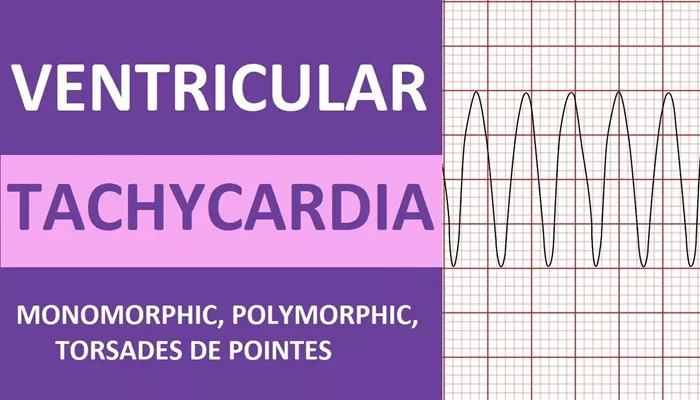Ventricular tachycardia (VT) is a serious heart condition characterized by a rapid heartbeat originating from the ventricles.
It can lead to severe complications, including fainting, heart failure, and sudden cardiac death. Treating VT effectively is crucial for patient safety and long-term health. This article will explore the various treatment methods for ventricular tachycardia with pulse, focusing on the most effective strategies available today.
What Is Ventricular Tachycardia?
Ventricular tachycardia occurs when abnormal electrical signals in the heart’s lower chambers (ventricles) cause them to beat faster than normal. A typical resting heart rate ranges from 60 to 100 beats per minute. In VT, the heart rate can exceed 120 beats per minute. This rapid heartbeat can prevent the heart from pumping enough blood to the body, leading to serious health risks.
Causes of Ventricular Tachycardia
Several factors can contribute to the development of VT, including:
Coronary artery disease: Reduced blood flow to the heart muscle can lead to scarring and abnormal electrical pathways.
Heart failure: This condition can cause structural changes in the heart that predispose it to arrhythmias.
Previous heart surgery: Surgical interventions may create scar tissue that disrupts normal electrical conduction.
Electrolyte imbalances: Abnormal levels of potassium or magnesium can affect heart rhythm.
Genetic conditions: Some inherited disorders can increase the risk of developing VT.
Treatment Options for Ventricular Tachycardia
Initial Assessment and Diagnosis
Before initiating treatment, a thorough assessment is essential.
Healthcare providers typically conduct an electrocardiogram (ECG) to diagnose VT and determine its characteristics. Other tests may include echocardiograms, stress tests, and blood tests to identify underlying causes.
SEE ALSO: What Are The Red Flags of Orthostatic Hypotension?
Emergency Treatment
In emergency situations, immediate treatment is critical. If a patient experiences sustained ventricular tachycardia (lasting more than 30 seconds) or shows symptoms like fainting or low blood pressure, the following emergency treatments may be employed:
Cardioversion
Cardioversion is a procedure that uses electric shocks to restore a normal heart rhythm. It is often performed in emergency settings when patients are unstable due to VT. The procedure typically takes place in a hospital setting and involves:
Preparation: The patient is monitored with ECG leads.
Sedation: Patients may receive medication to help them relax during the procedure.
Delivery of shock: A defibrillator delivers a controlled electric shock to the chest, aiming to reset the heart’s rhythm.
This method is effective for terminating episodes of VT and restoring normal sinus rhythm.
Non-Emergency Treatments
For patients with recurrent or persistent VT who are stable, several non-emergency treatment options are available:
Medications
Antiarrhythmic medications are often prescribed to manage VT. These drugs work by stabilizing the heart’s electrical activity and preventing abnormal rhythms. Commonly used medications include:
Amiodarone: Effective for many types of arrhythmias, including VT.
Sotalol: Helps maintain normal rhythm after an episode of VT.
Lidocaine: Often used in acute settings but may also be prescribed for chronic management.
Flecainide and Propafenone: Used in specific cases based on individual patient needs.
Patients should be closely monitored while on these medications due to potential side effects.
Implantable Cardioverter-Defibrillator (ICD)
An ICD is a small device implanted under the skin that continuously monitors the heart’s rhythm. If it detects a dangerous arrhythmia like VT or ventricular fibrillation, it delivers an electric shock to restore normal rhythm. The ICD provides a safety net for patients at high risk of life-threatening arrhythmias.
Procedure: The ICD implantation typically involves a minor surgical procedure.
Catheter ablation is a minimally invasive procedure that aims to destroy abnormal tissue causing VT. This technique involves threading a catheter through blood vessels to reach the heart. There are two main types of catheter ablation:
Radiofrequency Ablation (RFA):
RFA uses heat generated by radio waves to destroy abnormal electrical pathways in the heart.
The procedure typically lasts several hours and requires hospitalization for monitoring afterward.
Success rates vary depending on the type of VT being treated but can be as high as 80% in some cases.
Pulsed Field Ablation (PFA):
PFA is an emerging technique that uses electrical pulses instead of heat.
This method selectively targets cardiac tissue while minimizing damage to surrounding structures.
Early studies suggest promising results with reduced complication rates compared to traditional methods.
Lifestyle Modifications
In addition to medical treatments, lifestyle changes play a vital role in managing ventricular tachycardia:
Dietary Changes: A heart-healthy diet low in saturated fats and sodium can improve overall cardiovascular health.
Regular Exercise: Engaging in regular physical activity helps strengthen the heart but should be done under medical supervision.
Avoiding Stimulants: Reducing caffeine and alcohol intake can help prevent episodes of VT.
Smoking Cessation: Quitting smoking significantly lowers cardiovascular risks.
Conclusion
Ventricular tachycardia is a serious condition that requires prompt diagnosis and treatment. Options such as cardioversion, medications, implantable cardioverter-defibrillators, catheter ablation, and lifestyle modifications all play essential roles in managing this arrhythmia.
By understanding these treatment methods, patients can work closely with their healthcare teams to develop effective management strategies tailored to their individual needs.
Related topics:


